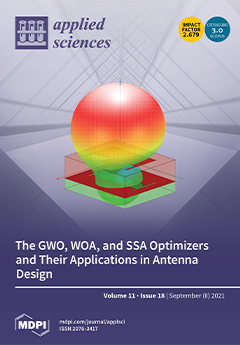Purpose: this study investigated the effects of the intensity of machine-based bicep curl resistance exercise on ultrafast ultrasound-derived muscle strain rate and carotid ultrafast pulse wave velocity (
ufPWV), and examined the association between muscle strain rate,
ufPWV, and established carotid
[...] Read more.
Purpose: this study investigated the effects of the intensity of machine-based bicep curl resistance exercise on ultrafast ultrasound-derived muscle strain rate and carotid ultrafast pulse wave velocity (
ufPWV), and examined the association between muscle strain rate,
ufPWV, and established carotid function measures in habitual resistance-trained individuals. Methods: twenty-three young habitual resistance-trained males (age: 24 ± 1 year, body mass index = 24 ± 1 kg/m
2) were recruited to participate in two bouts of acute bicep curl exercise. After one-repetition maximum determination (1RM), the participants were randomly assigned to engage in bicep curls at 40 or 80%1RM intensity (10 reps × five sets) by a crossover study design. The muscle strain rate of bicep muscle, carotid
ufPWV during systole(
ufPWV-sys), and diastole (
ufPWV-dia) were obtained pre- and post-exercise. In addition, carotid function measures were calculated by obtained carotid diameter and central blood pressure changes. Results: compared with pre-exercise, the reduction in post-exercise muscle strain rate and its area under the curve of 80%1RM was greater than those of 40%1RM. Both
ufPWV-sys and
ufPWV-dia increased regardless of exercise intensity. Baseline bicep muscle strain rate correlated not only with
ufPWV-sys (r = −0.71,
p = 0.001),
ufPWV-dia (r = −0.74,
p = 0.001), but also carotid compliance (r = 0.49,
p = 0.02), distensibility (r = 0.54,
p = 0.01) and ß stiffness (r= −0.84,
p < 0.0001). The
ufPWVs also correlated with ß stiffness (r = 0.64–0.76,
p = 0.01). Conclusion: muscle stiffness measured by ultrafast ultrasound elastography increases positively with resistance exercise intensity, and it appears to correlate with carotid
ufPWV and established carotid function measures in habitual resistance-trained individuals.
Full article





